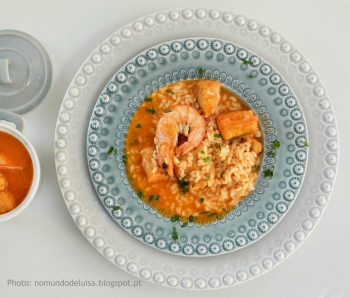Comfort food: Naughty rices the Portuguese simply love

Portugal’s link with rice exists long past its foundation. Rice started to be cultivated in our territory during the Mourish occupation, between the 7th and the 8th centuries AD.
This grain became so precious in our diet that nowadays we are the 4th biggest European producer, cultivating it in the estuaries of Sado, Tagus and Mondego rivers. The unique characteristics of soil, temperature, hours of sun and the water are the key to its singularity. The portuguese are also the biggest consumers of rice in Europe: 15 kg per capita annualy, roughly 3 times more than the European average.
Rice can be divided into 3 categories according to its size: short-grain rice, medium grain rice or long grain rice. In Portugal, we have three native varieties of rice grains: Ceres, Maçarico – very recent, resulting of years of the best national cientific reseach and development – and Carolino. This last versatile variety is white colored, short and relatively wide. When boiled, it can absorb completely the boiling liquid incorporating its seasoning and flavor. The grains are slightly gummy because of its highly starchy nature.
Its high amount of starch makes it the ideal variety for the Portuguese soupy rices we call arroz malandrinho (creamy rice, even though “malandrinho” literally translates to “naughty rice”). It is the most used rice in Portugal. You’ll find it in the very iconic national rice dishes such as the one with octopus (polvo), monkfish (tamboril), razor clams (lingueirão), chicken and its blood and offals (cabidela), or with pork and its blood and offals (sarrabulho). Is also used in one of our favorite soups, a chicken soup called canja. Broadly used as side with tomato, beans, turnip greens or cilantro, for example. It is even used in sausages such as morcela (blood pudding) or maranho de Pinhal (a goat sausage flavored with cured ham, paprika and mint). Last – but not least – it is also used in one of the most popular desserts in our country: arroz doce (rice pudding)
The recipe of arroz maladrinho
Firstly, when making arroz maladrinho you must sauté the rice in olive oil. That process prevents the rice grains from sticking together into a massive glob, making it easier not to overcook the rice for its surface is more firm. So, you need to make a refogado, sautéing onion and garlic in the olive oil until they are translucent. These ingredients give a warmth and sweetness to the dish and are the foundation of most Portuguese dishes. Then you add the raw rice. You can either rinse the rice beforehand or not, but rinsing it will wash away some of its starch, which might jeopardize the silky and rich end result we desire.
The second step is to add the main ingredients which lend flavor to the rice. It is preferable not to add any meat, fish or shellfish in this stage because they might overcook before the rice is fully cooked. We recommend you to add vegetables, legumes and/or aromatics such as tomato, beans, turnip, greens, which will give flavor to the food preparation without losing their preferable texture (meat would get hard, fish could disintegrate, and shellfish would get chewy).
Third step: We add the liquid. The ratio used should be 2,5 parts water to 1 part of rice (e.g.: 250 g water to 100 g of rice). The cooking liquid can vary according to the dish you are making: It can be water, or stock, either vegetable, beef, chicken, octopus, fish, or a shrimp bisque or even the boiling liquid of cod or octopus. The more flavorful the stock added the tastier will be the rice. Besides that you can add other aromatics such as thyme, rosemary, clove, or fennel seeds, and obviously some bay leaf, black pepper and salt. Typically we finish the dish by dressing it with fresh chopped parsley or coriander.
Finally, you must stir the rice both for avoiding that it gets stuch to the bottom of the sauce pan but also to help loosen the outer surface of the rice, allowing more starch to leak out into the sauce. Stirring is crucial because in arroz malandrinho we don’t any butter, cheese or any other kind of thickener, like in the Italian rissotto – The final texture of the rice is the result of the reduction of the liquid and thickening properties of carolino rice’s high levels of starch.
In short, the unique Portuguese so called naughty rices are versatile, tasty and super comforting. They warm us up, especially in the winter. And they are healthy! How can you not become a fan of such comfort food? They are one of the top rated tastings by our foodies guests. You can also taste both in our Lisbon Market, Food & Cultural Walk and Lisbon Roots, Food & Cultural Walk. Book now and join us tomorrow!
